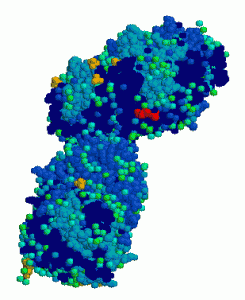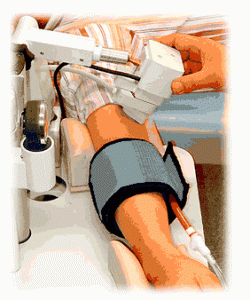Impaired Platelet Adhesion Noted by Impact-R in Type I Gaucher Disease
Tuesday, December 20th, 2011Philippe Gaucher, A French doctor first described a condition in a 32-year old woman with an enlarged spleen in 1882. This condition would soon be known as Gaucher’s disease and its biochemical nature elucidated in 1965.
Gaucher’s disease (GD) is an autosomal recessive disorder in chromosome 1
affecting the enzyme acid beta-glucosidase (a.k.a. lysosomal glucocerebrosidase, glucosylceramidase, D-glucosyl-N-acylsphingosine glucohydrolase). This enzyme catalyses the breakdown of glucosylceramide, a component of the cell membranes of WBC and RBC. When a macrophage phagocytoses the WBC and RBC that are due for destruction, glucosylceramide accumulates in the macrophage and cannot be eliminated. Glucosylceramide can also accumulate in the brain due to the rapid turnover of complex lipids during brain development and myelin sheath formation.
There are three types of GD, types I, II and III, of which type I is the most common and the least debilitating form. Unlike the other two, type I is non-neuropathic. Symptoms and signs are noted early in life or in early adulthood and includes hepatosplenomegaly, frequent infections, anemia, leukopenia and thrombocytopenia, osteoporosis and arthralgias, yellowish-brown skin pigmentation, and frequent ecchymoses and mucosal bleeding. The bleeding symptoms are sometimes noted to be disproportionate to the level of thrombocytopenia.
A research done by Spectre, et.al. proposes to clarify why the degree of mucosal bleeding does not coincide with the platelet count. His team noted that it is a defect in platelet adhesion that may be a potential cause for the bleeding. The study included patients with type I GD (with a platelet count of more than or equal to 130,000 per liter and a hematocrit of more than or equal to 30%) and healthy controls. They noted that type I GD patients had significantly lower platelet adhesion (as determined by IMPACT-R) that was not improved even with enzyme replacement therapy but was improved after splenectomy. Many of these patients also had mucosal bleeding. An abstract of the study can be found here.

